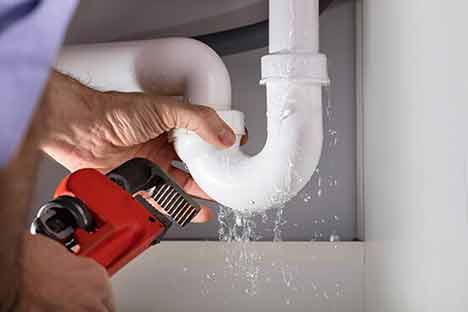
A guide to detecting leaks in your home – Every year in the USA, hundreds of thousands of homeowners suffer billions of dollars worth of damage to their homes because of water. Some of this damage is due to heavy rainfall, but a high proportion comes from leaking pipes or plumbing fixtures within the home.
Property damage by leaking pipes or plumbing fixtures is among the top insurance claims made by homeowners each year, according to McCourt Real Estate & Property Management. This problem is an enormous drain on homeowners’ and insurance company’s resources. Why are water leaks inside the home such a significant menace?
The reasons are threefold:
- Firstly, water is found in almost every room in the home. If it is not flowing from a plumbing fixture, it is flowing through the pipes buried inside the walls, floors, and ceilings. The presence of water in almost every part of the home increases the probability of leaks.
- Secondly, unknown to most people, water is highly corrosive. Water is a universal solvent because almost anything – including glass – will dissolve in water. This process is slow but always happening; eventually, water will find a way to wear out the material that contains it.
- Thirdly, most leaks start in areas of the home where you don’t expect a leak. Leaks often happen inside the walls and flooring of the house without visible signs of what is going on beneath the surface. When the leak is eventually discovered, it has done severe harm already.
But the good news is most water leaks can be found and dealt with before they have the chance to do damage that costs tens of thousands of dollars to fix. All it takes to find water leaks inside the home at their early stages is a little vigilance and some insights into what to expect.
10 tips for detecting leaks inside your home
The following tips will help you discover any water leaks lurking in your home and secretly damaging the property:
Fall in water pressure
A hidden leak will lead to a noticeable drop in the pressure of water flowing from faucets. Consistent issues with low water pressure when the problem is not from the city supply could signify a hidden leak in your home.
Higher water bill
Sudden and inexplicable increases in your water bill, especially if your water usage has not changed significantly and the utility company has not increased its rates, may be a sign that you leak.
Rust stains around toilets and sinks
If there are signs of rust on the walls around toilets, sinks, water fixtures, and water-utilizing appliances, there is a possibility that a pipe is leaking water which is causing the rust.
Stains on walls or ceilings
Water leaves telltale signs in the paintwork of walls where there has been a leak. As long as the water has penetrated the wall’s surface, it will leave a mark that is often more visible when the wall has dried.
Pest infestation
Pests – rodents and insects – need water to survive. A hidden leak in your home will draw them to the house. If you have trouble with pests, maybe it is because you leak into your home.
Mold and mildew
Mold and mildew cannot thrive without moisture; their presence often means you have a leak around the area. If you see mold or mildew in parts of your home, there is water that is making their growth possible.
Peeling paint
Peeling wall paint is either due to poor paint quality or because a wall is damp. As water evaporates from the damp wall, it forms bubbles underneath the paint surface, causing the paint to peel away.
Pools of water
Pools of water around appliances or parts of the home could be because of a leak. Sometimes the water does not pool around the leak’s location but flows to other parts of the home and collects there.
Sounds of water
This could be a sound of dripping, such as when water drips from a faucet or showerhead. It could also be a gurgling noise inside pipes; usually, a sign that air is finding its way into the pipe through a leak.
Water temperature issues
When hot or cold water from your dishwasher or washing machine takes on a different temperature from what you have set, there is a chance that the issue is due to a leak.
As a homeowner, it is crucial to recognize that you are caught in a constant battle to protect your home from water damage. Keeping a sharp lookout for signs of damaged plumbing is vital for protecting your pocket from the ill effects of water leaks.
However, if it is too much work to constantly watch your home for leaks, there is a way to make the task easier. You can install an automatic leak detection system in the house and also have a professional plumber do period inspections of the plumbing.
